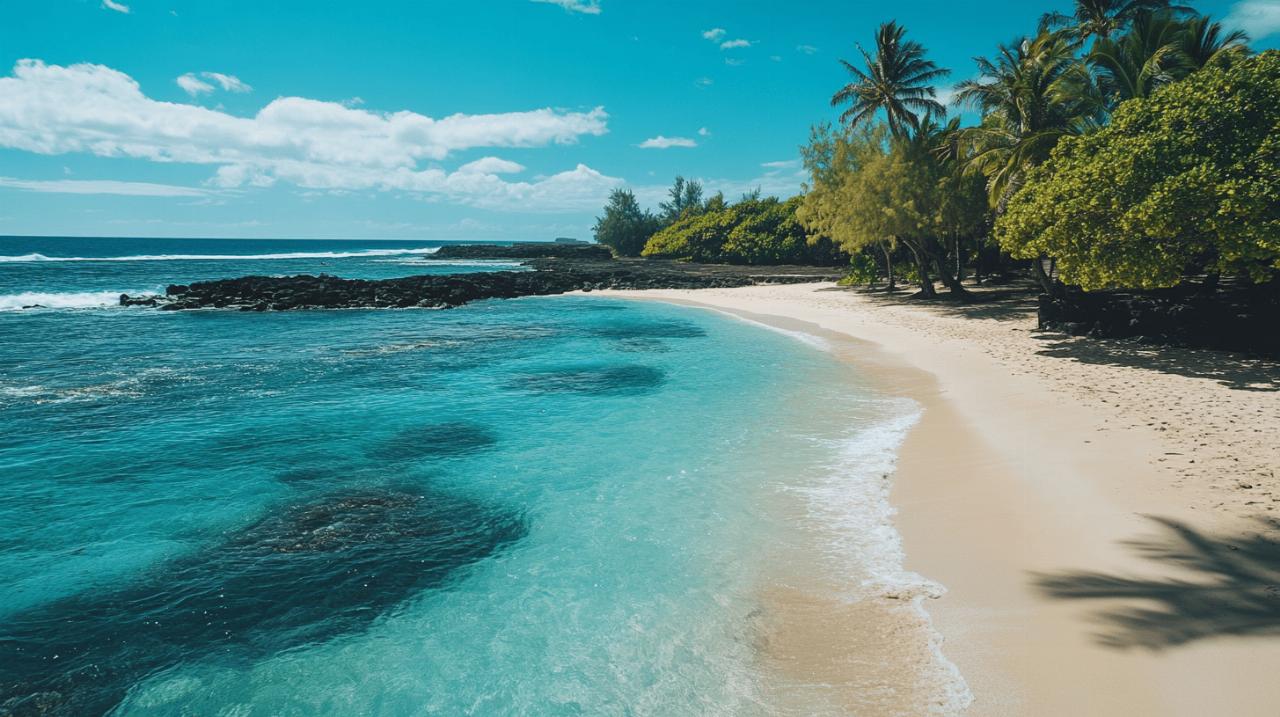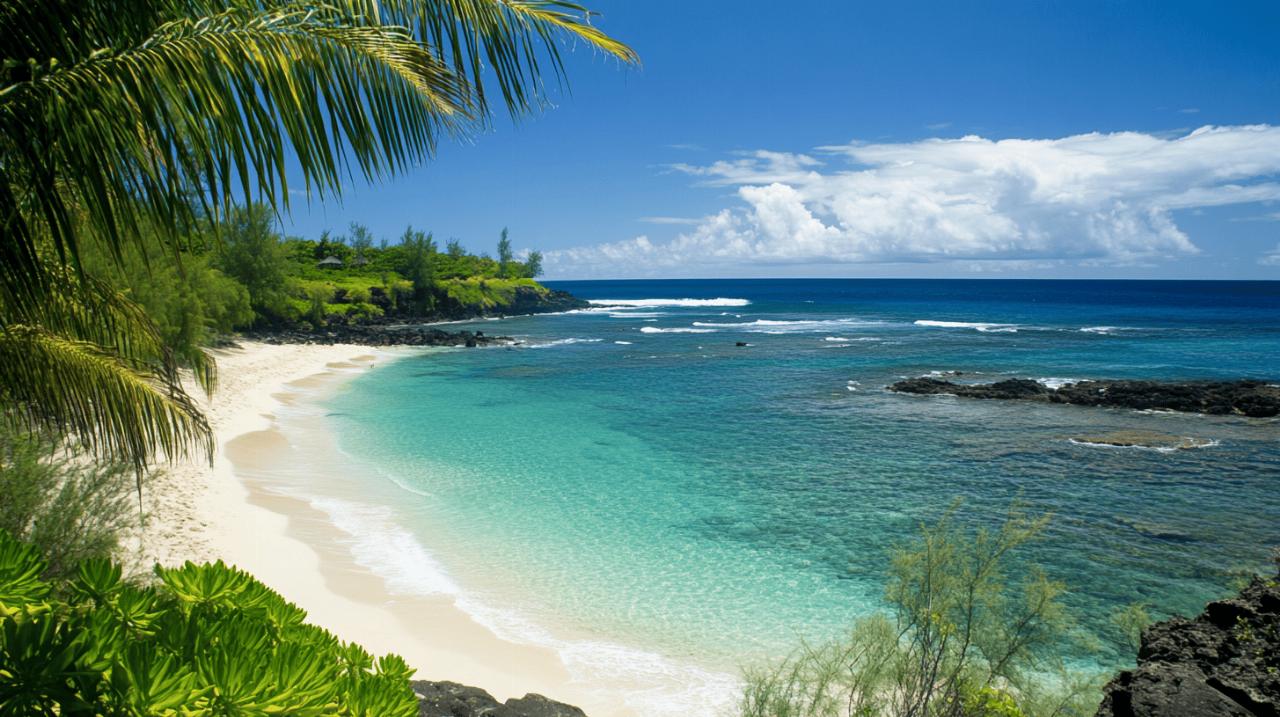Reunion: Quelles Plages Choisir Pour Eviter Les Requins? Analysis of 2023 Attack Patterns and Safe Beach Alternatives
Safest Beaches on Réunion Island for Shark-Free Swimming
Réunion Island, nestled in the azure waters of the Indian Ocean near Mauritius and the Seychelles, offers breathtaking coastal scenery. However, its reputation as the « sharkattackcapital » means visitors need to be particularly savvy about where they take a dip. The island boasts numerous stunning beaches, but safety concerns regarding sharks have become increasingly important for tourists and locals alike.
Lagoon beaches protected by natural barriers
The west coast of Réunion Island hosts the majority of swimmer-friendly beaches, thanks to the protective barrier formed by coral reefs. These natural shields create lagoons where sharks rarely venture, making them relatively safe havens for water enthusiasts. Plage de L'Hermitage stands out as the most popular beach on the island, offering crystal-clear waters within its protected lagoon. The beach tends to get quite crowded, especially during weekends and holidays, precisely because of its safety reputation and stunning white sands.
Another gem along the west coast is Plage de la Salines, which provides a more relaxed atmosphere with fewer visitors. The beach offers excellent snorkeling opportunities, although recent years have seen some coral bleaching affecting the underwater scenery. Nevertheless, the lagoon remains a sanctuary where swimmers can enjoy the Indian Ocean waters with minimal shark risk.
Monitored swimming areas with safety nets
Beyond the natural protection of lagoons, certain beaches on Réunion have implemented additional safety measures to protect swimmers. Plage de Boucan Canot, often referred to as the « Saint-TropezofRéunion » for its sophisticated atmosphere, features a concrete promenade and monitored swimming areas. Safety nets have been installed at several beaches to create secure swimming zones, reducing the risk of unwanted encounters with marine predators.
Plage des Brisants stretches an impressive 2.5 kilometers along the coastline and is particularly popular with locals. While not ideal for swimming in all sections, designated areas with safety measures in place offer protected spaces for water activities. These beaches with implemented security measures represent the island's commitment to maintaining tourism while acknowledging the reality of shark presence in surrounding waters.
Understanding réunion's shark population and risk factors
Bull Sharks and Tiger Sharks: Behaviour and Habitat
The waters surrounding Réunion Island are primarily home to two species of sharks that pose significant risks to humans: bull sharks and tiger sharks. Bull sharks are particularly notorious as they can thrive in both saltwater and freshwater environments, making them adaptable predators that frequently venture close to shorelines. Their territorial nature and sometimes aggressive behaviour contribute to the island's elevated shark incident statistics.
Tiger sharks, with their recognizable striped pattern, are another species commonly found in Réunion's waters. These large predators are known for their less discriminate feeding habits, which can occasionally include humans by mistake. Understanding that these are not mindless man-eaters but rather predators following their natural instincts helps visitors develop a more informed perspective on the risks.
Seasonal and environmental factors affecting shark activity
Shark presence around Réunion Island fluctuates based on several environmental factors. Water temperature, turbidity, and time of day all influence shark activity patterns. Dusk and dawn represent particularly high-risk periods when many shark species actively hunt. Additionally, murky water conditions, especially after rainfall when runoff enters the ocean, can increase the likelihood of shark encounters as visibility decreases for both sharks and swimmers.
The western Indian Ocean ecosystem has undergone changes in recent decades that may have altered traditional shark movement patterns. Some experts suggest that modifications to fishing practices and marine protected areas have influenced shark behaviour around the island. Visitors should always check current local advisories before planning beach activities, as conditions and recommendations can change rapidly based on recent shark sightings or incidents.
Official safety measures and supervised areas
Role of Lifeguards and Safety Protocols
Réunion Island's beaches with designated swimming areas employ trained lifeguards who monitor waters for potential dangers and enforce safety regulations. These professionals play a crucial role in maintaining visitor safety, using sophisticated surveillance methods including drone monitoring at some locations to spot sharks before they approach swimming areas. Lifeguards also maintain flag systems to communicate current safety conditions, with red flags indicating prohibited swimming due to heightened risk factors.
Safety protocols extend beyond human surveillance to include technological solutions. Acoustic monitoring systems have been deployed in some areas to detect tagged sharks approaching popular beaches. When implemented alongside physical barriers like safety nets, these multilayered approaches significantly reduce the risk of shark encounters while allowing visitors to enjoy Réunion's beautiful coastline.
The Work of the Ligue Réunionnaise de Surf in Risk Management
The Ligue Réunionnaise de Surf has taken a proactive approach to managing shark risks while preserving the island's surfing culture. This organisation works closely with local authorities to establish protocols for safer surfing, including designated surf zones with enhanced surveillance. Their efforts include education programmes for surfers about risk factors and appropriate responses to potential shark sightings.
Collaboration between surf enthusiasts, scientists, and government officials has led to innovative approaches to risk management. The implementation of vigils during sanctioned surfing events, where spotters monitor waters from elevated positions or boats, has allowed competitive surfing to continue on the island despite the challenges. These community-driven initiatives demonstrate how Réunion has adapted to maintain its water sports heritage while acknowledging the presence of sharks in local waters.
Alternative Activities for Visitors to Réunion
Land-based attractions and adventures
While Réunion's beaches undoubtedly hold great appeal, the island's primary draw for many travellers is actually its extraordinary hiking opportunities. The island features dramatic volcanic landscapes, including the active Piton de la Fournaise volcano, which offers remarkable trekking experiences. Dense forests with waterfalls and unique flora provide countless options for nature enthusiasts seeking adventures away from coastal areas.
Plage de l'Étang Salé presents an interesting alternative for beach lovers who want to avoid swimming. This striking black sand beach, formed from volcanic minerals, offers spectacular sunset views and a dramatic coastline experience without necessitating ocean entry. Similarly, Plage Grand Anse sits in a picturesque horseshoe-shaped bay that's perfect for picnicking and coastal walks, even though swimming is not recommended due to strong currents and potential shark presence.
Safe water sports in protected zones
For visitors determined to experience Réunion's waters, several options exist beyond traditional open-ocean swimming and surfing. The protected lagoons offer perfect conditions for paddleboarding and kayaking, allowing close interaction with marine environments while minimizing shark encounter risks. Guided snorkeling tours within protected reef areas provide opportunities to observe vibrant marine life in controlled settings with professional supervision.
Glass-bottom boat tours represent another excellent alternative for those wishing to appreciate underwater scenery without immersion. These vessels operate primarily in lagoon areas, offering views of coral formations and tropical fish from the safety of a boat. For adventurous visitors, canyoning in the island's numerous river gorges provides thrilling water-based experiences in freshwater environments completely separated from ocean predators, combining the excitement of aquatic activities with the security of shark-free waters.
Recent Shark Attack Patterns and High-Risk Areas to Avoid
Planning a trip to Réunion Island? While this stunning French territory in the Indian Ocean offers brilliant hiking opportunities and beautiful beaches, it's crucial to understand the risks associated with shark encounters. Known rather grimly as the 'shark attack capital', Réunion requires visitors to be savvy about where and when to take a dip.
Analysis of 2023 Shark Encounters and Location Mapping
Most shark incidents on Réunion Island occur outside the protected lagoon areas along the west coast. These lagoons, shielded by coral reefs, provide natural barriers against larger marine predators including bull sharks and tiger sharks that frequent the island's waters. Beaches such as Plage de L'Hermitage and Plage de la Salines sit within these lagoon systems, making them relatively safer options for swimmers.
The more exposed beaches without reef protection present higher risks. Plage Grand Anse, whilst visually stunning in its horseshoe-shaped bay, is not recommended for swimming due to shark presence. Similarly, while Plage des Brisants stretches an impressive 2.5km and is popular with locals, swimming conditions are not ideal from a safety perspective.
Identifying Times and Conditions with Elevated Risk
Risk factors increase during certain conditions. Dawn and dusk represent periods of heightened shark activity. Murky water, particularly after rainfall, can attract bull sharks that typically hunt in low-visibility environments. The west coast beaches like Plage de Boucan Canot (nicknamed the 'Saint-Tropez of Réunion') may have anti-shark nets in place during specific seasons, but visitors should always verify current safety measures.
Black sand beaches such as Plage de l'Étang Salé might offer dramatic sunset views, but swimming safety varies throughout the year. For those keen to enjoy the water, focusing on the protected lagoon areas or choosing alternative activities like hiking (the island's premier attraction) represents the wisest approach. When visiting any beach, checking for current local regulations, heeding warning signs, and only entering designated swimming zones monitored by lifeguards will significantly reduce risks while enjoying this magnificent island.
